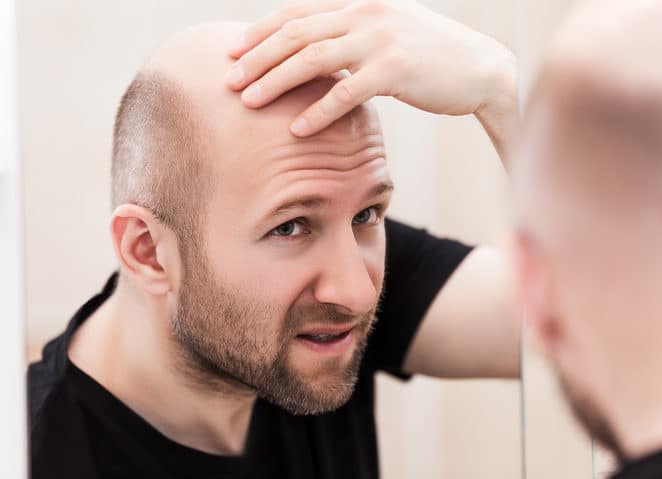
Dr. Barrera has been helping patients with hair loss for over two decades. The latest advances in this area allow him to transplant follicular units with from one to four hairs in each into the thinning areas. This is called follicular unit extraction, and it gives our patients great results. This new method transplants healthy, functioning hair follicles into the thinning or balding areas. It returns normal hair growth and Dr. Barrera is excited to offer it to our patients.
How has hair transplantation improved?
Various methods for hair transplantation are nothing new; it’s been attempted since the 1950s with varying degrees of effectiveness. Formerly, an entire patch of “bald resistant” hair from the back of the head was removed and transplanted in its entirety on the balding area. This created two problems. First, when the skin on the back of the scalp was stretched back together and stitched, it created an unsightly scar where hair would not regrow. This scar could be seen when the person was swimming and in other situations. Second, the transplanted hair patches looked unnatural.
Follicular unit extraction (FUE) delivers much better results for hair transplantation. Individual follicles from the back of the scalp are transplanted into the balding areas. The result is natural looking and effective.
How is FUE done?
In follicular unit extraction, the back of your head is first shaved and then numbed. This is the area where your hair is still growing normally and isn’t prone to balding. Dr. Barrera then removes hair follicles one by one from this area using a penlike device that gently rotates around each particular graft in a cylindrical shape. It uses pneumatic pressure to remove the hair follicles smoothly and uniformly. This means Dr. Barrera doesn’t touch the follicles with forceps, so there isn’t any damage by pulling and twisting. The harvested hair follicles are kept in a canister equipped to lightly mist them with sterile saline solution on a regular basis until it’s time for transplantation.
Next, the areas where you need hair replaced are cleaned and then numbed. Each recipient site is created with a special tool to the exact specifications of the graft. Dr. Barrera then inserts the hair grafts into the created holes to the precisely measured depth. As you would assume, this is a time consuming process, taking anywhere from four to eight hours.
When will the hair start to grow?
After about two to three weeks, your transplanted hair will fall out, but it’s not a reason for concern. This is simply the follicles’ reaction to the trauma. Of your transplanted follicles, around 60 percent will successfully take hold and start growing new hair within six to nine months.
Do you have thinning hair? You don’t have to live with it. Call Dr. Barrera at (713) 468-5200 and set up a consultation for follicular hair transplantation.

